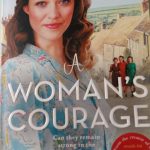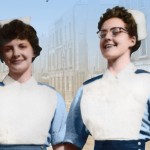The Tube Exposed
Time to get nostalgic. It’s almost thirty years since The Tube, the chaotic Channel 4 music show, first aired. I loved it. It came from Newcastle, and that’s where I’m from. The bands were great and it was live and you never knew what to expect. Even when it all went wrong no one seemed to care. As the funny and fearless Paula Yates, said: ‘It genuinely was good when it was good, but that was just by chance.’
I used to picture the show ending, the studio red light going off, and everyone piling into the Egypt Cottage pub next to the Tyne Tees studios on City Road, downing industrial amounts of alcohol, not a care in the world. A few years later, I discovered that was pretty much how it was. The Tube lot always knew how to have a good time and it showed in the anarchic way they carried on, both on-screen and off. I adored Paula Yates and Jools Holland, the least-fazed sweary pairing on TV. Paula had a way of coming out with the kind of stuff no one else would have got away with – such as on the first show, on November 5, 1982, asking Sting if being called Gordon had been a hindrance to being a pop star. Jools had what Channel 4’s chief executive Jeremy Isaacs called ‘a wonderful mocking deadpan cool.’ Together, the presenters seemed to make it up as they went along – missing their marks, forgetting what they were meant to say, sparking complaints from outraged viewers, usually in Oxford. ‘I do think that any time there was trouble it was always amusing. That was the point of it,’ was Jools Holland’s verdict.
In the mid-nineties the show came back in the form of The Best of The Tube on Channel 4. I made a documentary, The Legend of The Tube, and was one of the producers on the revamped series, working with Tube originals Malcolm Gerrie, Geoff Wonfor and Chris Cowey. We didn’t have production meetings, as such. We did go to The Groucho Club – the Grouchy, as it was known – a lot. Somehow, everything got done. ‘We want it to be how it always was,’ someone or other always seemed to be saying. That meant returning to Tyne Tees to film with Paula and Jools. Soon after we met, Paula invited me round to her home in Chelsea and gave me the low-down on ‘how it always was’ in the old Tube era. She was sharp and sweet and lovely. She was also mad on Take That at the time. Jason Orange was her favourite. Very early one morning when I was still in bed – she was presenting The Big Breakfast then – she phoned, wanting me to book Mark Cook, the Take That make-up artist, for the shoot in Newcastle. She was insistent it had to be him, even though she barely needed make-up and always looked flawless. Jools had other last-minute concerns. The night before the shoot, he called, not happy at being booked into The Copthorne Hotel on the Quayside. ‘Me and Paula want to stay in the Gosforth Park,’ he said. ‘We want it to be how it always was.’ Allegedly, The Copthorne was the city’s new rock and roll hotel. U2 had stayed there. Jools was not impressed. I batted the problem at the director, Geoff Wonfor, a scary shouty big-hearted sort. Luckily, Geoff wanted to stay in The Copthorne, which meant the rest of us – Jools and Paula included – had to as well, even though that meant it wasn’t going to be how it always was.
Having survived The Best of The Tube, I knew what to expect when, in 1999, I was commissioned to write The Tube Exposed, a history of the show. Since everyone had enormous fondness for the programme, it was easy to persuade people to do interviews. Not so easy to get them to turn up when and where they were due. It was a fairly haphazard process, just like the original show. How it always was, really. Phone calls would be scheduled and nothing would happen. Arrangements would be cancelled or changed at short notice. I was summoned to a hotel room to do an interview and found the subject in the bath. It all seemed normal in the context of The Tube. The deadline got closer and nothing had been written. It took me weeks to get to Paula. Eventually, I was given instructions to show up at a suite at the Grosvenor Park Hotel on Park Lane one afternoon and there she was in one of her long floaty frocks looking as ethereal as always. A lot had happened since I’d last seen her. Michael Hutchence had died, her world had shattered, and still she made the time to talk engagingly about The Tube. In the end, all the interviewees came good, contributing to a book that seemed to capture the spirit of the show and still manages to make me laugh out loud.
There aren’t shows like The Tube now. Jeremy Isaacs said it was ‘totally unlike any other programme.’ It was. Bono called it ‘the best rock ‘n’ roll programme on TV.’ It was. Many people go misty-eyed at the mention of it for different reasons. U2 cite The Tube’s airing of their Red Rocks gig in Denver, Colorado, in 1983, as a massive turning point for them. Tube researchers proved brilliant talent-spotters with a knack for getting to people first and giving them their break. Paul Young made his TV debut on the show in 1983. The following year, Madonna made her British TV debut on The Tube. Fine Young Cannibals took off after The Tube filmed them performing Johnny Come Home in a bare studio in Birmingham. Trevor Horn spotted Frankie Goes to Hollywood doing Relax on The Tube and signed them to his ZTT label. Pretty much everyone appeared on the show during its five year run – from The Jam, who closed the first show with a blistering set that marked their last TV appearance, to Iggy Pop, Tina Turner, Terence Trent D’Arby, Duran Duran, Spandau Ballet, Elton John, The Eurythmics and many, many more. Where else would you get Killing Joke on the same show as Cliff Richard? Or the eccentric comedy act Les and the Amazing Dancing Cars one week and French and Saunders or Rik Mayall the next? Only on The Tube.
Read more: The Tube Exposed by Maria Malone







